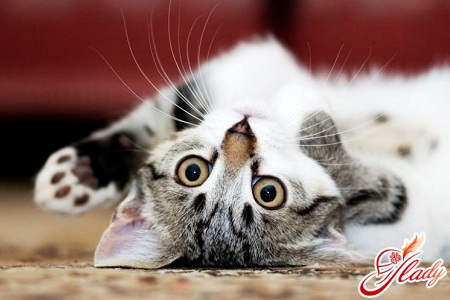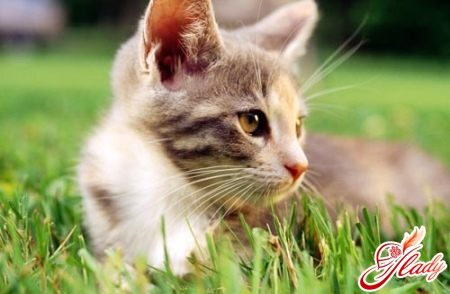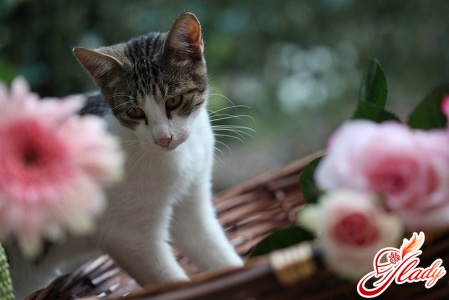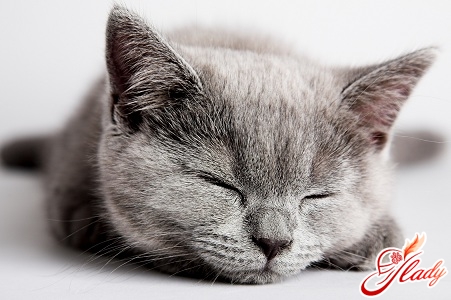 Of course, cats are independent and quiteself-sufficient, but people do not think so. Sometimes our desire to take care of our smaller brothers reaches fanaticism. And cats do not need extra care: they cope with many problems on their own, but sometimes they still need our help and our participation. Nevertheless, this help should not be a "disservice". For example, an adult healthy cat is able to bear and give birth to offspring without any human participation. But there is one "but". Animals living in our homes are often overly spoiled, pampered and "humanized" by us. Therefore, they lose some of their instincts or simply act up, demanding increased attention. So if you have a cat who is going to become a mother, knowledge of her "female" physiology will not be superfluous for you. How does pregnancy proceed in cats, how does childbirth occur, are any complications possible and does she need your help during this period? Let's find out.
Of course, cats are independent and quiteself-sufficient, but people do not think so. Sometimes our desire to take care of our smaller brothers reaches fanaticism. And cats do not need extra care: they cope with many problems on their own, but sometimes they still need our help and our participation. Nevertheless, this help should not be a "disservice". For example, an adult healthy cat is able to bear and give birth to offspring without any human participation. But there is one "but". Animals living in our homes are often overly spoiled, pampered and "humanized" by us. Therefore, they lose some of their instincts or simply act up, demanding increased attention. So if you have a cat who is going to become a mother, knowledge of her "female" physiology will not be superfluous for you. How does pregnancy proceed in cats, how does childbirth occur, are any complications possible and does she need your help during this period? Let's find out.
Pregnancy of a cat
Cats carry their offspring for an average of nine yearsweeks (plus or minus four days). The exact period of pregnancy depends on the breed of the animal, the number of fetuses, the individual characteristics of the cat and the conditions of its maintenance. Kittens that are born before the sixtieth day of pregnancy are considered premature (they usually do not survive). The period of pregnancy in cats is usually divided into trimesters. The first three weeks do not show any obvious signs of pregnancy, and it is almost impossible to determine pregnancy at this stage. By the twenty-first day (or a little later), pregnant cats' nipples turn pink and swell. At this time, the first ultrasound examination can be performed, which will show not only the presence of kittens, but also their number.
- Important! Do not try to find for yourself kittens in the mother's womb. Palpation should be performed only by an experienced specialist, reckless probing can lead to miscarriage.
From the second trimester, a pregnant cat maymorning sickness and vomiting will appear, which is associated with hormonal changes in her body. The animal refuses to eat, looks depressed and depressed, but this condition lasts only a few days. At the same time, the cat's belly begins to gradually increase, and already from the second month of pregnancy the belly grows quickly. In the second half of pregnancy, the fetuses begin to move, and in the last two weeks the cat's belly takes on a pear-shaped form, the nipples droop, and colostrum appears in them. The cat becomes sedentary, begins to eat less and can already begin to look for a place to give birth.
Care of a pregnant cat
A pregnant cat does not require special careneeds. There is no need to limit her mobility. Moderate exercise is even useful for cats (as well as for everyone else) during pregnancy. Only in the last weeks do not allow your pregnant pet to climb to a height: at this time, cats have a hard time maintaining balance, since the center of gravity shifts due to the large belly. Otherwise, all your participation should be limited to proper nutrition and monitoring the animal. In the first four weeks, the cat should be given her usual food, but increase the proportion of vitamin-rich foods in the diet. If you feed your cat prepared food, then buy her kitten food: it is also suitable for pregnant and lactating cats. You can also give her special vitamin supplements, but first consult a veterinarian. In the second half of pregnancy, the cat should receive food rich in proteins, and the amount of food can be increased by one and a half times. Never feed a pregnant cat leftovers from your table, do not give her smoked or fried foods. Firstly, the animal will not receive the necessary nutrients, and secondly, this can lead to obesity (pregnant cats easily gain weight). By the way, obese cats usually carry very large kittens, and this can lead to complications during childbirth. A cat's pregnancy should be monitored by a veterinarian. Of course, in most cases, such monitoring is only a preventive measure, but it is still necessary to show the animal to a specialist. Firstly, only a veterinary clinic will accurately determine the pregnancy of a cat by conducting an ultrasound examination. Secondly, the doctor will determine the general physical condition of the animal and, if necessary, prescribe additional tests. If the cat suffers from chronic diseases, if it has intestinal parasites, then the veterinarian will prescribe the necessary treatment and instruct you on the correct care of the animal.
- Important! Do not give the cat any hormonal and antihelminthic drugs and antibiotics without consulting a veterinarian. Most of them (like vaccinations) are contraindicated in pregnancy and can lead to serious consequences.
Pregnancy in its final stages requires you toincreased attention to the animal and a mandatory visit to the doctor. It is necessary to conduct another examination (or just an examination), and also find out where you can go for emergency help during childbirth. In addition, it is from the veterinarian that you can get qualified advice on the birth itself and your participation in this process.
Possible pathologies of pregnancy
To avoid a visit to the vet feeling like a waste of money, keep in mind that a cat's pregnancy can be complicated by the following pathologies:
In addition, observation by a specialist and diagnostic tests will help to distinguish a real pregnancy from a false one and from pyometra (purulent inflammation of the uterus).
Childbirth
As a rule, healthy cats give birth without any complications.problems. However, your participation in them is also necessary. First, you must prepare a place for the cat about to give birth. Secondly, it is desirable that you be present as an observer and ready to provide emergency assistance. The cat should give birth at home, in a familiar environment. Prepare a box (cardboard or plywood) for this purpose in advance, which you should place in a warm and quiet place, preferably away from the passage. The dimensions of the box (approximately) are sixty centimeters long and fifty centimeters wide and high. It is advisable to close the box with a removable lid, and cut a hole in one of the walls of the box for the cat. Cover the bottom of the box with several layers of paper towels (or newspaper) and a clean, dry diaper. In addition, you will need:
- box for newborn kittens;
- a hot-water bottle or an electric blanket (also for kittens);
- sterile gloves;
- a syringe without a needle or an eye dropper;
- silk sterilized threads or dental floss;
- green;
- clean towels.
Labor begins with precursors.A week before the birth, the cat's behavior becomes restless, she begins to look for a place and lick herself often. It is at this time that it is necessary to introduce the cat to the box prepared for her and ensure that the cat accepts it as a "birth chamber". Immediately before the birth, the cat occupies her box, her breathing quickens, and the cat herself meows plaintively. First-time cats can be very frightened and seek help from their owner, but most cats prefer to give birth in solitude.
- Important! If the cat in every possible way demonstrates the reluctance to see the owner close to him, hisses and tries to hide in an inaccessible place, leave her alone. Most likely, deliveries without your presence will pass more quietly.
As a rule, a cat's birth is easy, andthe animal does not need any help from a person. The birth takes place in several stages, and the kittens are born one by one. First, contractions (muscle contractions of the uterus) and pushing (contractions of the abdominal muscles) begin, then the kitten is born, and after that the placenta is expelled. The cat licks the newborn kitten, bites through the umbilical cord, and eats the placenta. Until the birth of the second kitten, leave the first-born with the mother, and before the birth of the new cub, transfer the kitten to a pre-prepared box with a heating pad (wrapped in a clean towel). You will need a syringe, gloves, sterile threads only if the mother refuses to treat the kitten herself or simply does not have time to do this, since the second cub is born immediately after the first. Then you need to take the baby, carefully tear the amniotic sac, and use a pipette or syringe to suck out the mucus from its mouth. The umbilical cord should be tied closer to the tummy (3-4 centimeters), then cut and smeared with liquid brilliant green. The birth is considered complete as soon as all the kittens are born. The cat calms down, lies on her side and pushes the kittens to the nipples. And you can only watch this picture with affection. On average, labor in cats lasts from two to six hours. But sometimes some kittens are born even a day after the birth seems to be over. Such births are not considered pathological, and you do not need to be afraid. You need to sound the alarm if suddenly:
- pregnancy lasts more than seventy days;
- the cat has fever and fever;
- from the vagina of the cat there is an unpleasant and sharp odor;
- fights and attempts last more than a day;
- bleeding begins, lasting more than ten minutes.
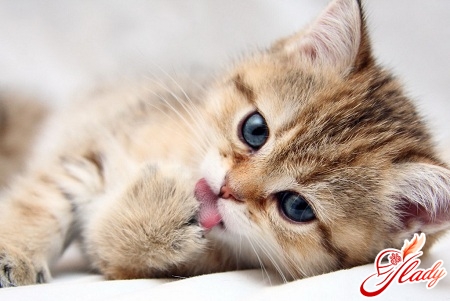
Caring for a cat after giving birth
During the postpartum period, the cat needs rest.It is advisable to show your pet to the vet a day after giving birth. Otherwise, your care comes down to proper feeding and hygiene of the animal. It is necessary to change the bedding in the box as it gets dirty, and it will get dirty, because at first the cat will continue to have vaginal discharge and may even go into heat. Feed the cat more caloric food or special food, give dairy products, and do not limit the amount of food. Actually, this is what your care for the cat in the postpartum period consists of. The cat does not need anything else from you: she is completely absorbed in her new condition and caring for her offspring. All you can do is watch this idyllic picture, and if you have questions, consult a veterinarian. Love your pets and take care of them: they need it. We recommend reading:




